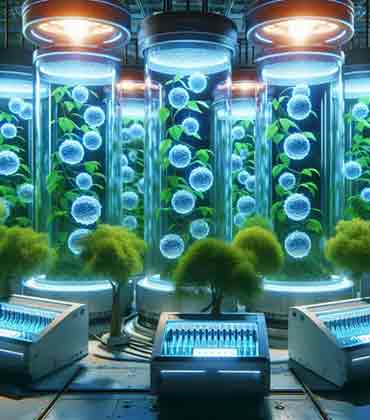THANK YOU FOR SUBSCRIBING
By Takashi Nakamura, Vp Of Food Safety, Fresh Del Monte Produce (Fdp: Nyse)
Food Security Challenges: Health-driven and Consumer...
By Luis Bermejo, Managing Partner, Alaya Capital
FoodTech The New Wave in Startups is Now Emerging in...
By Arun Ahuja, Senior Vice President & General Manager, Healthcare & Corporate at Transact + CBORD
The Path of Least Resistance: Connecting Hospital Food...

Food Safety: Battling Biofilms with the 7 Steps of Sanitation
Nicole Pool, Director Corporate Sanitation, Hostess Brands

 Nicole Pool, Director Corporate Sanitation, Hostess Brands
Nicole Pool, Director Corporate Sanitation, Hostess BrandsBiofilms are a community of bacterial cells that attach to each other and a surface. If they are not removed, they will continue to collect and attach to each other making it more difficult to remove and allowing the bacteria an excellent place to grow and develop. Although biofilms are hard to remove, they can be removed if you follow the 7 steps of sanitation and observe the four factors of the wash (TACT—Time, action, Concentration, and Temperature). Unfortunately, there is no golden ticket to the removal of biofilms, but if you follow the 7 steps and have a good monitoring program, biofilms can be controlled and even prevented. Let’s take a second and go through what the 7 steps are.
Step 1—Dry pick up and Disassembly:
This step is important to remove bulk soil from the area prior to the start of the sanitation. Removing protein from product contact surfaces and the floor as well as picking up any trash or obstructions in the area that needs to be cleaned is key in this step. It is also critical to make sure that any disassembly is completed at this time, this will allow for more accurate detailed cleaning. Disassembly also allows for the inspection of any hard-to-reach areas and identification of any niches that may cause harborage or sites for bio-film growth.
Step 2—Pre-Rinse:
Pre-rinse is necessary to perform a knock down of proteins and soils from all equipment and lower walls. It is important to do the rinse from the top down to prevent recontamination of equipment or surrounding area. You do not want to use water that is hotter than 140* during this step as it may cause the soil to bake on and make it harder to remove and increase the biofilm growth. The target soil removal should be 95% or better during this step.
Step 3—Soap and Scour:
This step is essential for the fight against biofilms on equipment. Cleaning chemicals help to get rid of any remaining soil, and hand scrubbing (a requirement…. not an option) will continue that breakdown and removal by releasing debris from surfaces for an easier rinse down. Some tips for an effective soap and scour step…
a. Ensure total application of foam from bottom to top on all equipment
b.Allow foam to sit on the equipment but not dry
c. Hand scrub while the foam is on the equipment with a separate scrub pad and bucket
d. Scour/clean your drains during this step to eliminate cross contamination later
e. Remember TACT during this step
a.Time: how long it takes for the chemicals to adequately penetrate, break down, and remove soil from a surface
b.Action: could be water pressure, use of scrub pad, CIP, COP
c.Concentration: the optimal concentration of chemical used during sanitation to remove targeted soils
e. Temperature: ensuring the right temperature for the target soil to help ensure easy removal.
Step 4—Rinse and Inspect:
During this step you should rinse foam from all surfaces, working from the top to the bottom finishing on the floor. It is best to use high-volume low-pressure water to prevent over spray and potential cross contamination or re-contamination. Once your rinse is complete you should inspect the equipment using inspection tools to verify the removal of targeted soils (flashlight, mirror, senses).
Step 5—Preoperational Inspection:
When performing the preoperational inspection, it is important for the inspector to follow all safety requirements to perform the task and use all tools needed to perform the job thoroughly. Tools that will help identify any remaining soils are a flashlight, sense of smell, sense of touch, mirrors etc.
This is an extremely important step to help identify any missed soils and address them immediately. Pre-op inspection is not just walking a line and looking only at product contact surfaces. It is important to look at all areas of the production floor, ceilings, frameworks, and underside of the equipment. Essentially making sure that not only is the equipment ready for the production but the environment is as well. It is vital to identify, document and correct any deficiencies prior to turning the line or equipment over to production.
Step 6—Assemble and Sanitize:
One of the final steps to the process is to assemble and sanitize the equipment and product surfaces. The sanitizer you use should be a no rinse sanitizer and it is best to sanitize product surfaces prior to assembly to ensure that the sanitizer has the best contact with product contact surfaces. It may be necessary to do a second sanitize after the equipment is reassembled. As with your chemical cleaner it is important to apply the sanitizer from bottom to top to ensure complete coverage and give the sanitizer the best opportunity to be effective in protecting your equipment and product. Similar to inspections, it is also important to sanitize all around the equipment, and environment.
Step 7—Documentation:
Documentation is not only needed to identify that the equipment is ready to be used for production, but it is also key in tracing back any issues that could potentially occur with the equipment. Thorough and accurate records will ensure compliance with customer requirements and regulatory agencies by verifying the cleanliness of the equipment and environment.
Now that you have the key steps to proper cleaning, remember, whether you are cleaning or inspecting equipment; take your time, make sure it is clean, verify that your work is completed and that you have followed the necessary steps to ensure that you are providing equipment and an environment that will allow you and your company to produce safe quality food.
Read Also














